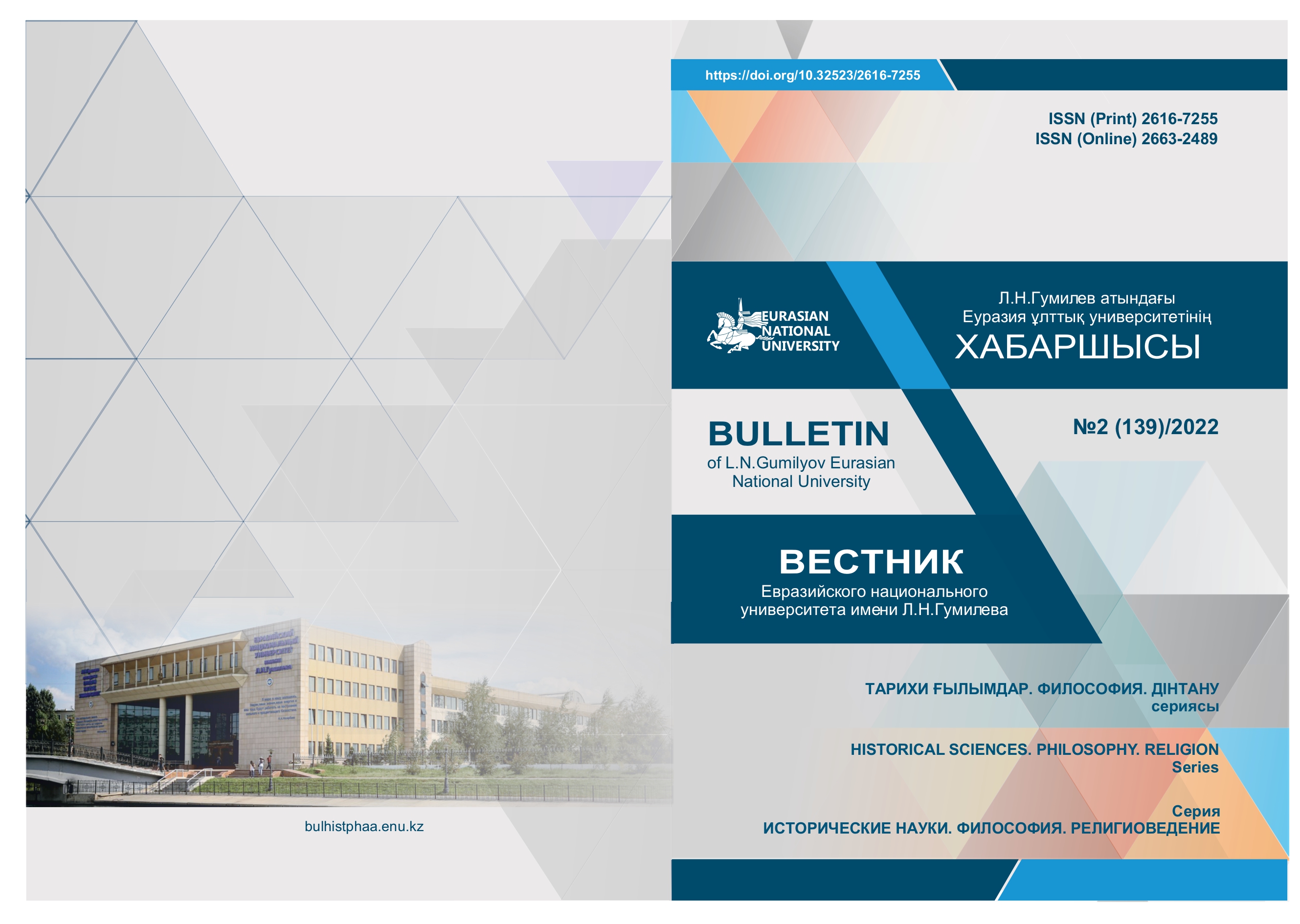The local kazakh elite in the second half of the ХІХ century and the beginning of the XX century and its transformation (on the basis of the materials of Aktobe region)
Views: 242 / PDF downloads: 387
DOI:
https://doi.org/10.32523/2616-7255-2022-139-2-29-50Keywords:
reform; elite; sultan; volost; elders; bai; bi; ishan; khazret; mullah; transformationAbstract
The article examines the socio-political activity of the Kazakh regional elite of the second half of the XIX - early XX century and its transformation. As a result of the administrative and political reforms of the 1860s-1890s, a new administrative division was introduced on the territory of the Kazakhs of the Orenburg department, according to which officials such as the volost administrator and village elders were introduced based on local self-government. The article analyzes the functional responsibilities of the volost administrator and village elders introduced in the «Regulations». Based on the provisions of the 60-90s of the nineteenth century, the authors also consider the introduction of the services of the people's court, the volost mullah, studying the impact of these changes on social relations in Kazakh society, the activities and status of biys and religious figures participating in it. Also, the article separately analyzes the transformation of the institution of the bai at this stage. The composition of the Kazakh regional elite of the second half of the 19th century, in addition to volost and aul elders, included biys who served as people's judges, volost mullahs, bais, aksakals and other influential people. These were individuals with authority and influence in society. Over time, volost governors and aul elders became an integral part of the social structure of Kazakh society. During the period we are considering, the activities of representatives of this regional elite in society have undergone significant changes. Our article is devoted to the study of these transformational processes. At the end of the work, the following preliminary conclusions were drawn regarding the transformation of the Kazakh regional elite: 1. The Kazakh regional elite formed the basis of Kazakh society in the second half of the 19th - early 20th centuries. Influential volosts, biys, religious figures, bais, aksakals continued to interact and solve the pressing problems of the people; 2. Volost governors, approved on the basis of the new reform, were eventually integrated into Kazakh society and became the main officials in public and political life; 3. Representatives of the regional Kazakh elite during this period underwent a transformation in social status and political influence. The Russian government strive to limit the authority and activities of the Kazakh biys, bais, clergy, and other influential people by introducing elected positions and various restrictions. With the establishment of Soviet power, repressive measures began against representatives of the Kazakh people and the elite, damage was done to their authority and status in society.
Downloads

Downloads
Published
How to Cite
Issue
Section
License
Copyright (c) 2022 Gulbanu B. Izbassarova, Assylbek T. Maden

This work is licensed under a Creative Commons Attribution-NonCommercial 4.0 International License.







